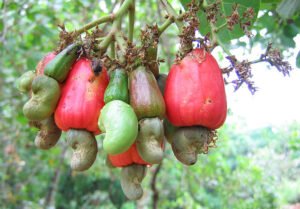Our Native Pitahaya (Dragon Fruit)
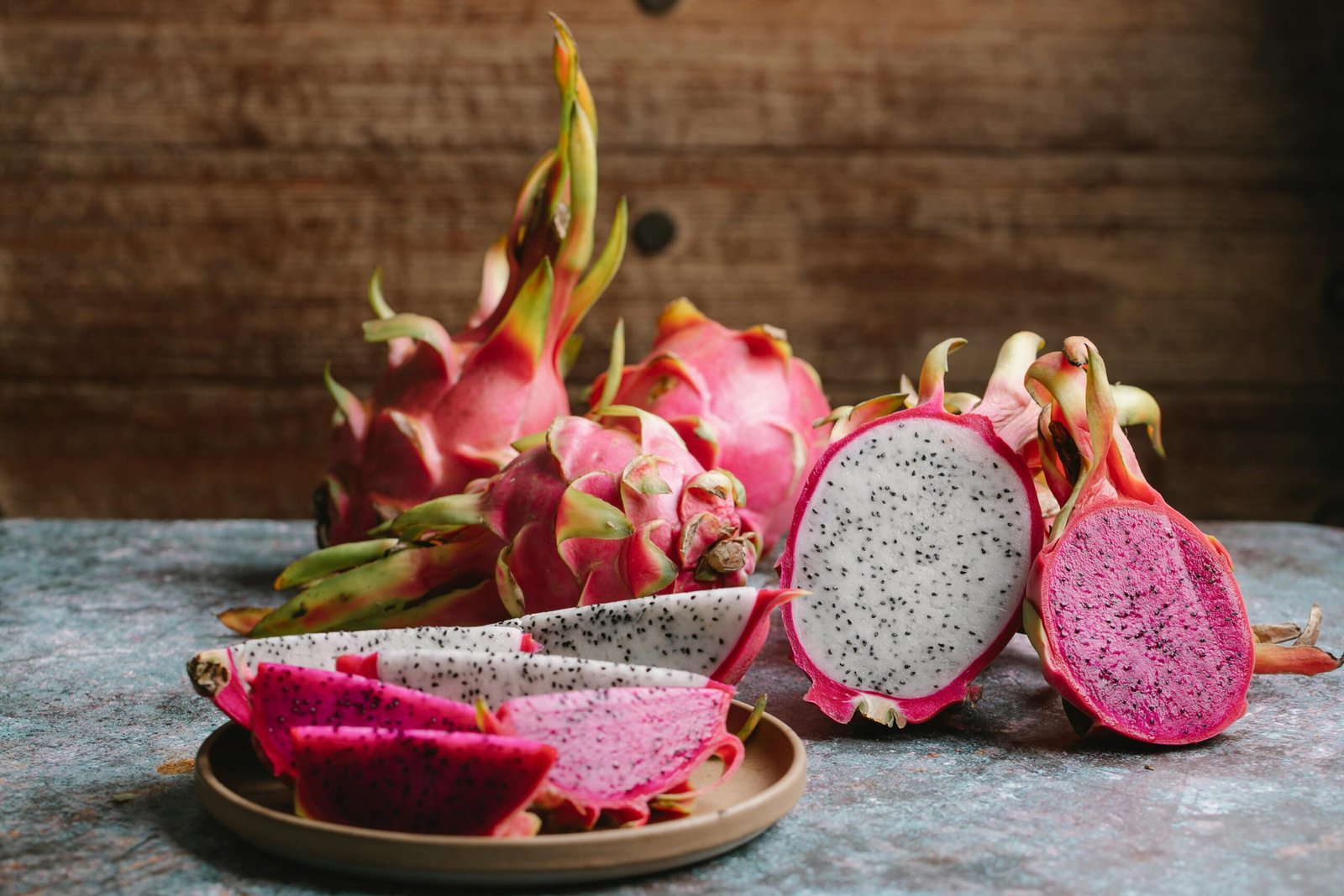
The fiery & unusual Dragon Fruit is a true Costa Rican native – in fact the red-fleshed variety is named ‘Selenicereus costaricensis‘ in honor of our nation. The fruit’s original range extended into the Pacific coast of Costa Rica but, these days, it is cultivated in warm areas all over the world.
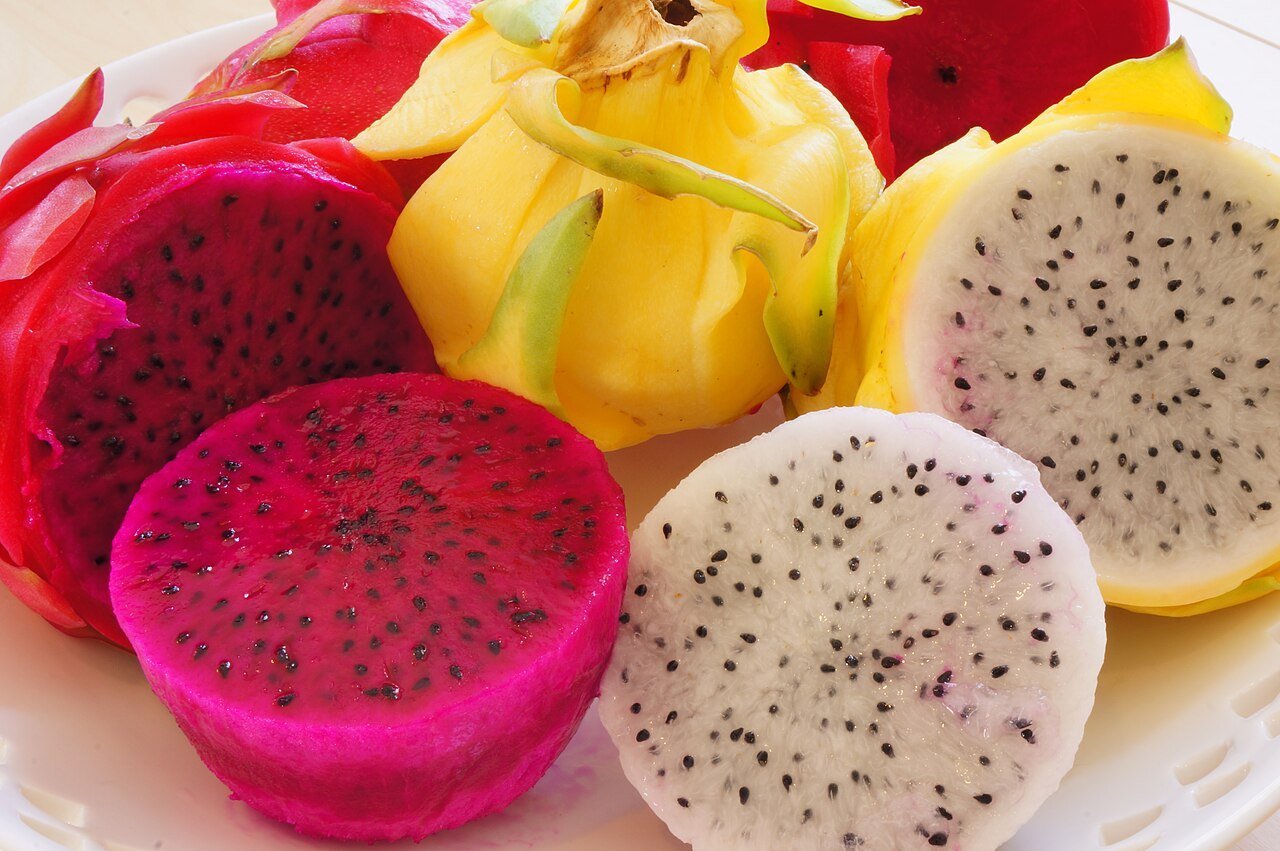
Dragon Fruit is loved for her sweet & complex flavors, crunchy seeds, the ease of peeling, and the striking visual presentation of the fruit’s skin.
SO THE DRAGON FRUIT GROWS ON A CACTUS?
Yes – the fruit is produced by several species of climbing cacti in the Selenicereus genus and, true to their nature, it is a desert fruit – although it also happily grows along the savannahs of central America’s Pacific coast.
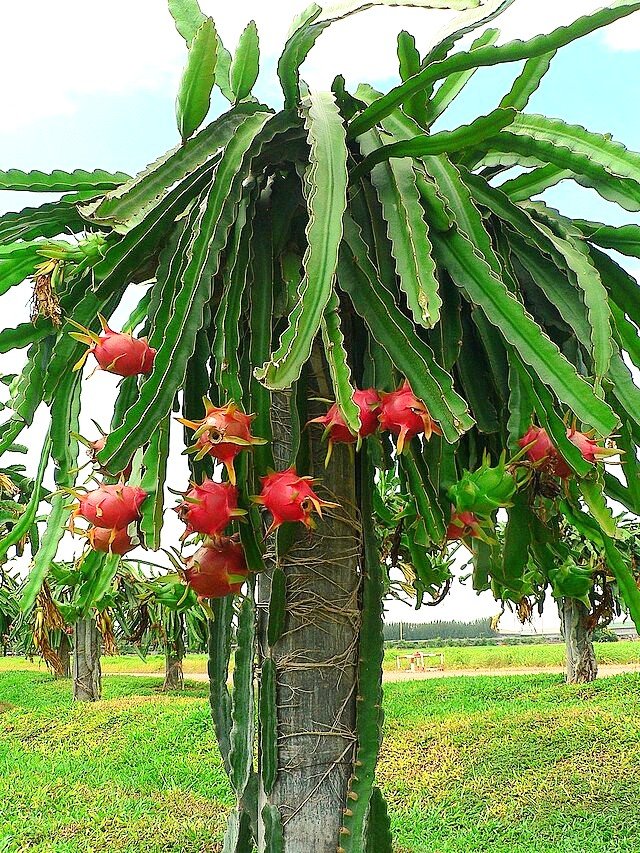
The cactus is of a climbing variety – it will snake up rocks, trees, shrubs, fences, street signs, poles and anything within reach. The plant uses aerial roots to grab hold of its host as it races up towards sunlight. Dragon Fruit is semi-Epiphytic – meaning it does not steal nutrients from its living ‘host’ but simply uses it as a ‘support structure’ to elevate itself, however it has no problems growing on its own where no suitable object exist nearby.
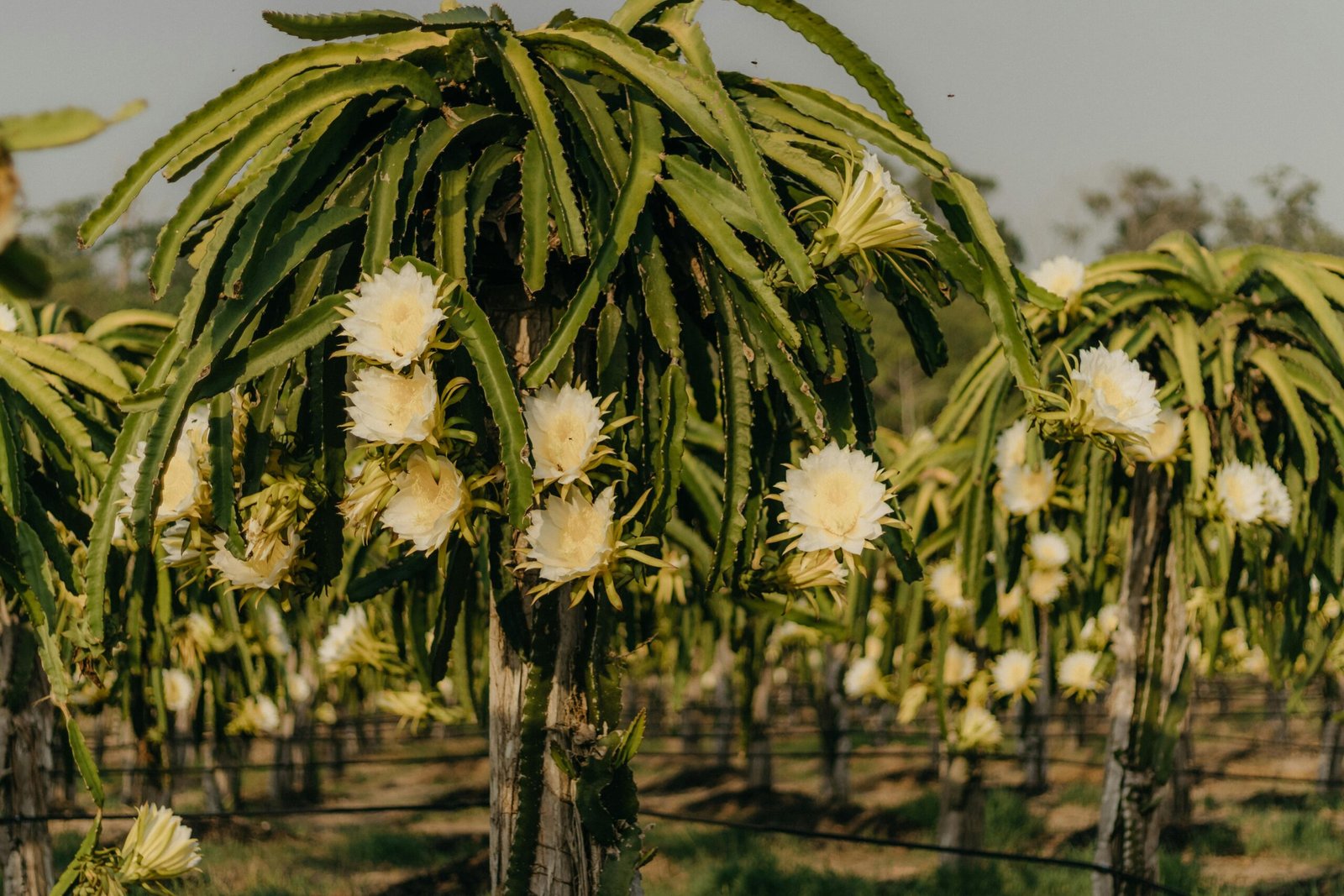
GROWING THE DRAGONFRUIT
Dragon Fruit prefer warm, moderately dry climates with a defined dry season. They do well in our Costa Ballena area and similar climates along the Pacific Coast between Costa Rica and Southern Mexico, the traditional range of the fruit. The cactus can withstand heat of up to 40 degrees and occasional cold spells – while frost is tolerated for very short periods, in general temperatures below 10 degrees are not ideal. Moderate moisture is preferred and, during our dry seasons, the plant may benefit from watering. In Costa Rica, Dragon Fruit grows in elevations from sea level to 1,800 meters, however it seems to do the best around the 800 meter above sea level mark. It loves compost that is rich in humus.
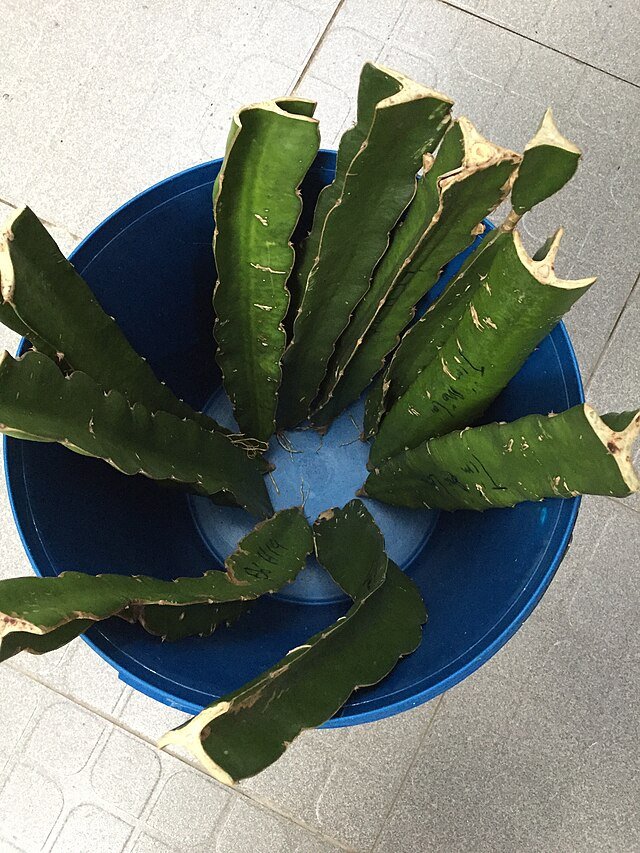
Dragon Fruit, like many other cacti, can be easily grown from a cutting. 20 to 25cm sections of healthy stem can be taken to root in just as little as 2 weeks – and fruit can be produced in as little as 1 year since the vulnerable phase of the growth cycle and the initial few years’ worth of growth are skipped. As far as other methods, seed propagation can be tricky as people have a tendency to over-water seedlings which often leads to rotting. Seedlings are also very delicate & thus prone to an untimely end and, even if successfully grown, may take 5 years or more before the plant matures and begins to fruit. Not to mention the real risk that the fruit will differ from those of the parent tree due to potential cross-pollination. Grafting can guarantee an identical genetic stock but it is tricky and requires some skill & experience.
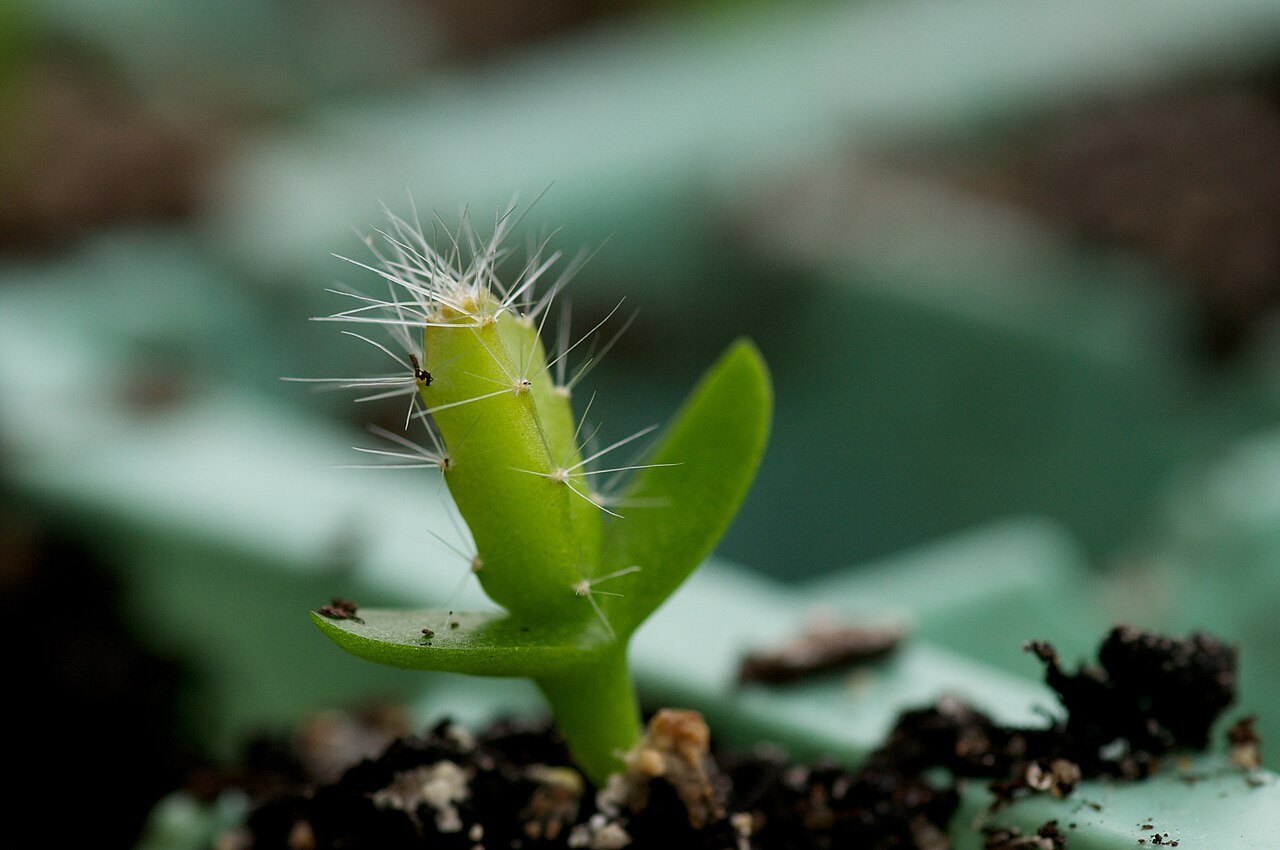
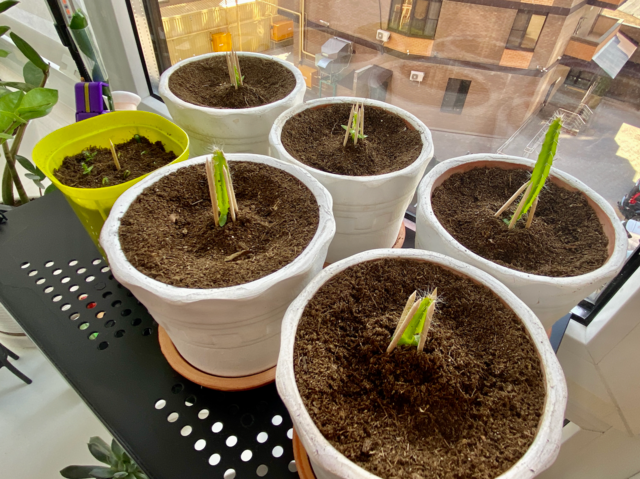
So for the typical hobby grower, propagating Dragon Fruit via cuttings seems to be the simplest, fastest method and one which guarantees that the new plant will bear the same type of fruit as the ‘parent’ and will take the quickest route towards producing fruit. For a purist and someone who values starting ‘from scratch’, using seeds collected from nice fruit to grow a brand new Dragon Fruit, is a good option albeit one that could take some time to deliver fruit and may surprise with an unknown variety.
Advanced growers may also use tissue culture to propagate disease-free clones, though this method requires lab conditions.
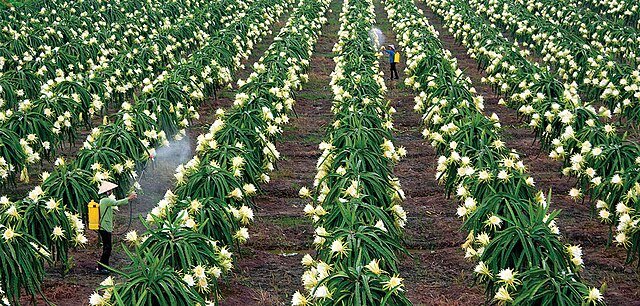
THE THREE DRAGON FRUIT SPECIES
Three main species of Dragon Fruit have been propagated around the world – and their names can be confusing, with both the skin and flesh color being thrown around:
1 – Selenicereus undatus (Pitaya blanca or white-fleshed pitaya or red pitaya) has pink-skinned fruit with white flesh.
🧊 Flavor: Mild, slightly sweet, sometimes described as a cross between kiwi and pear
🧃 Texture: Soft, juicy, with a crisp seed crunch
🧠 Notes: Least intense in flavor; refreshing but subtle
🌱 Most commonly grown and widely available
🌤 Hardy and adaptable to various climates
🛒 Often found in supermarkets due to high yield and shelf life
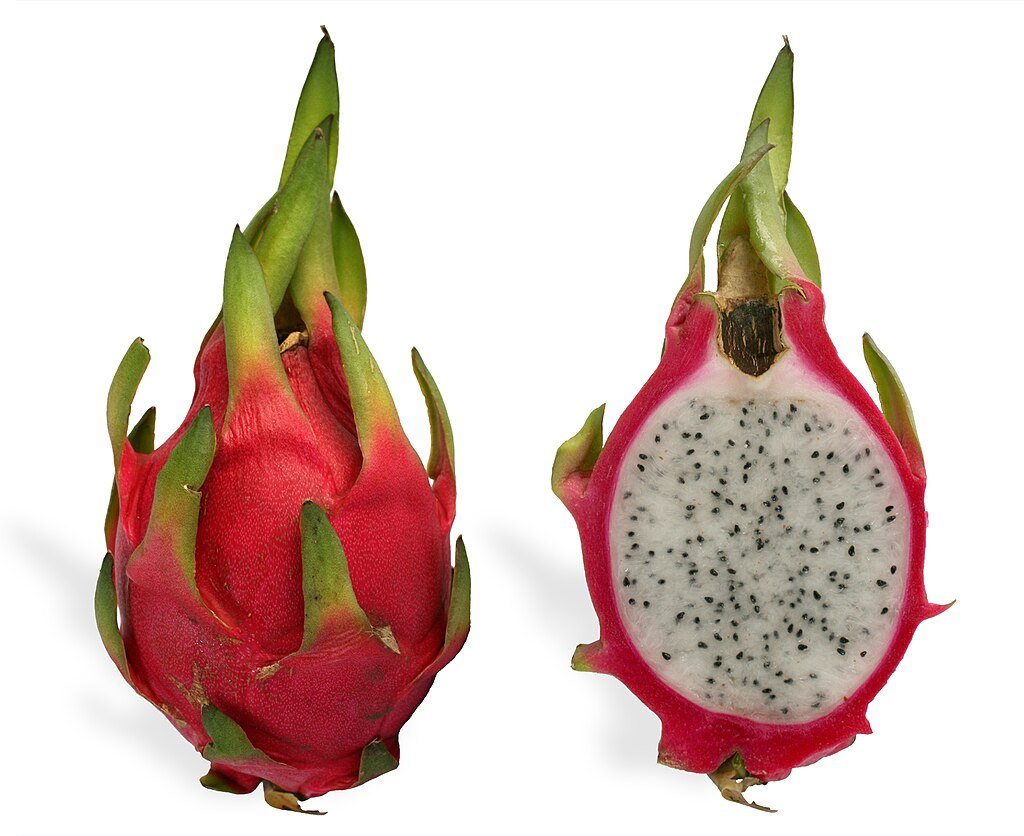
2 – Selenicereus costaricensis (Pitaya roja or red-fleshed pitaya or Costa Rican pitahaya) has red-skinned fruit with red / dark red / purplish flesh.
🍷 Flavor: Richer and sweeter than white-fleshed; berry-like with hints of watermelon
🍓 Texture: Creamier and denser, still speckled with crunchy seeds
💥 Notes: More flavorful and visually striking—great for smoothies and desserts
🌞 Requires warmer climates and more sun
🧪 Contains more antioxidants (betacyanins) than white-fleshed
🎨 Often used for natural food coloring due to its vivid hue
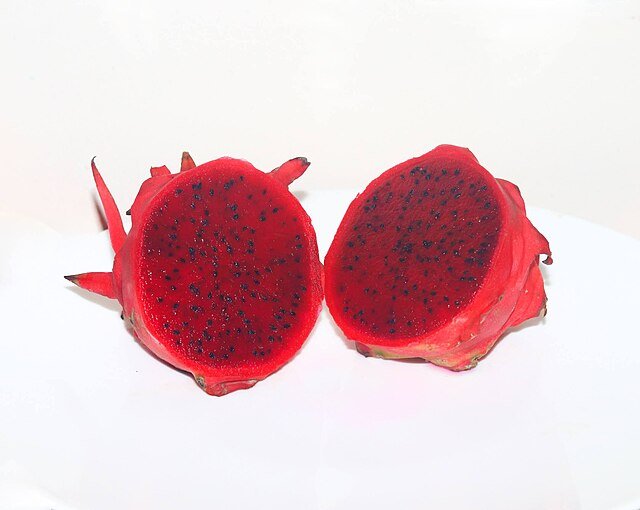
3 – Selenicereus megalanthus (Pitaya amarilla or yellow pitaya) has yellow-skinned fruit with white flesh.
🍯 Flavor: Sweetest of all varieties—honey-like with tropical notes
🍬 Texture: Firmer and silkier, with a pleasant crunch from seeds
🌟 Notes: Highly prized for its flavor, though less commonly found
🌵 More delicate and slower-growing
🧤 Skin is thinner and more fragile, making transport tricky
🧑🌾 Often grown by enthusiasts or specialty farms
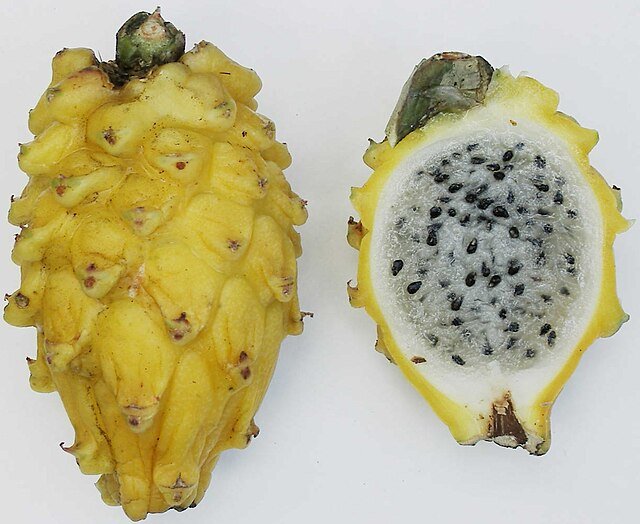
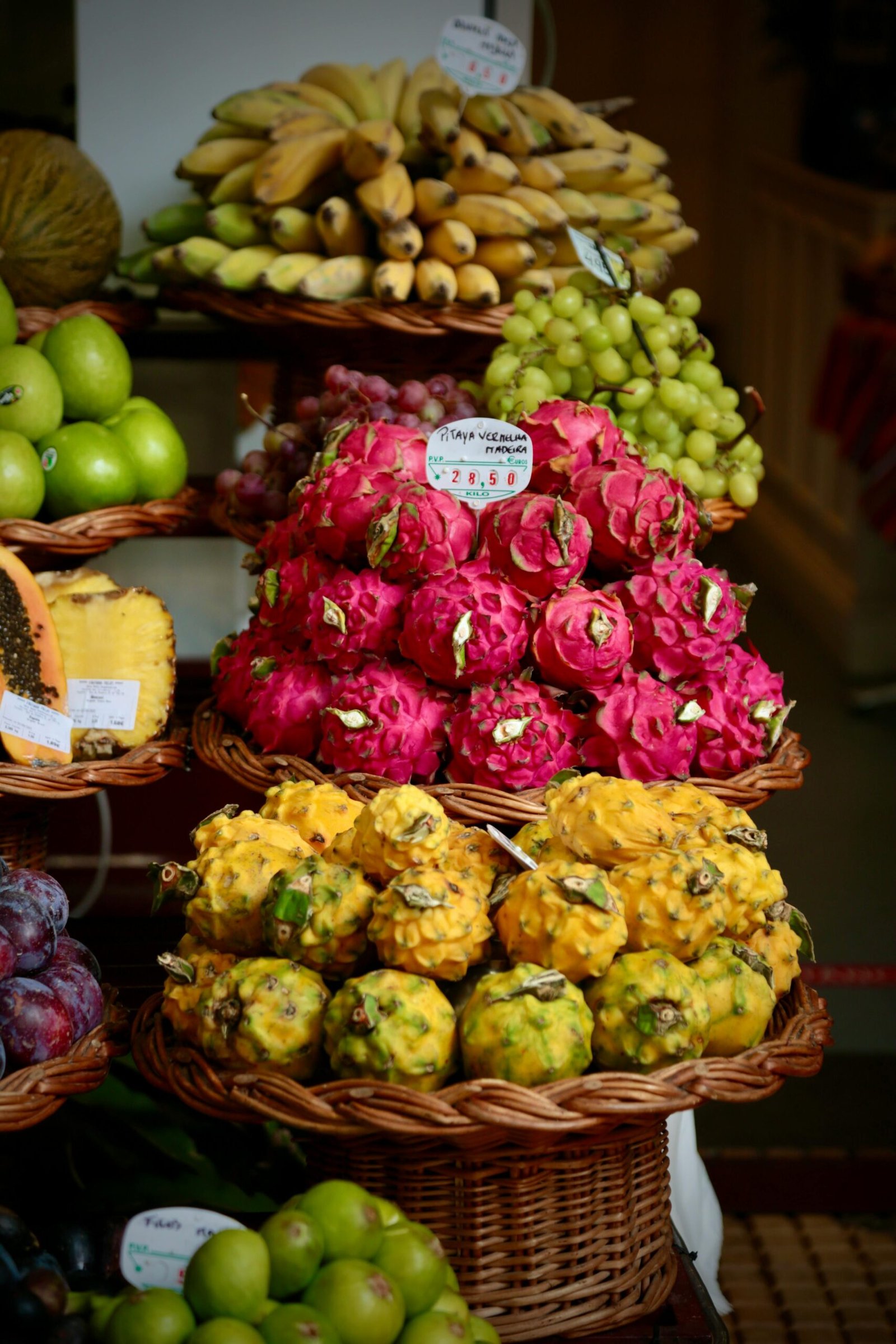
MYSTIC FLOWERS AND NIGHTTIME POLLINATION
The huge, 30cm wide Dragon Fruit flowers are very ethereal – they open in the evenings and wilt by sunrise, lasting for a single night only. That is when they release their mystic scent – sweet, creamy and slightly fruity with hints of vanilla, jasmine, and fresh melon – this scent strengthens during the night but quickly starts to fade away after midnight, disappearing with the rising sun.
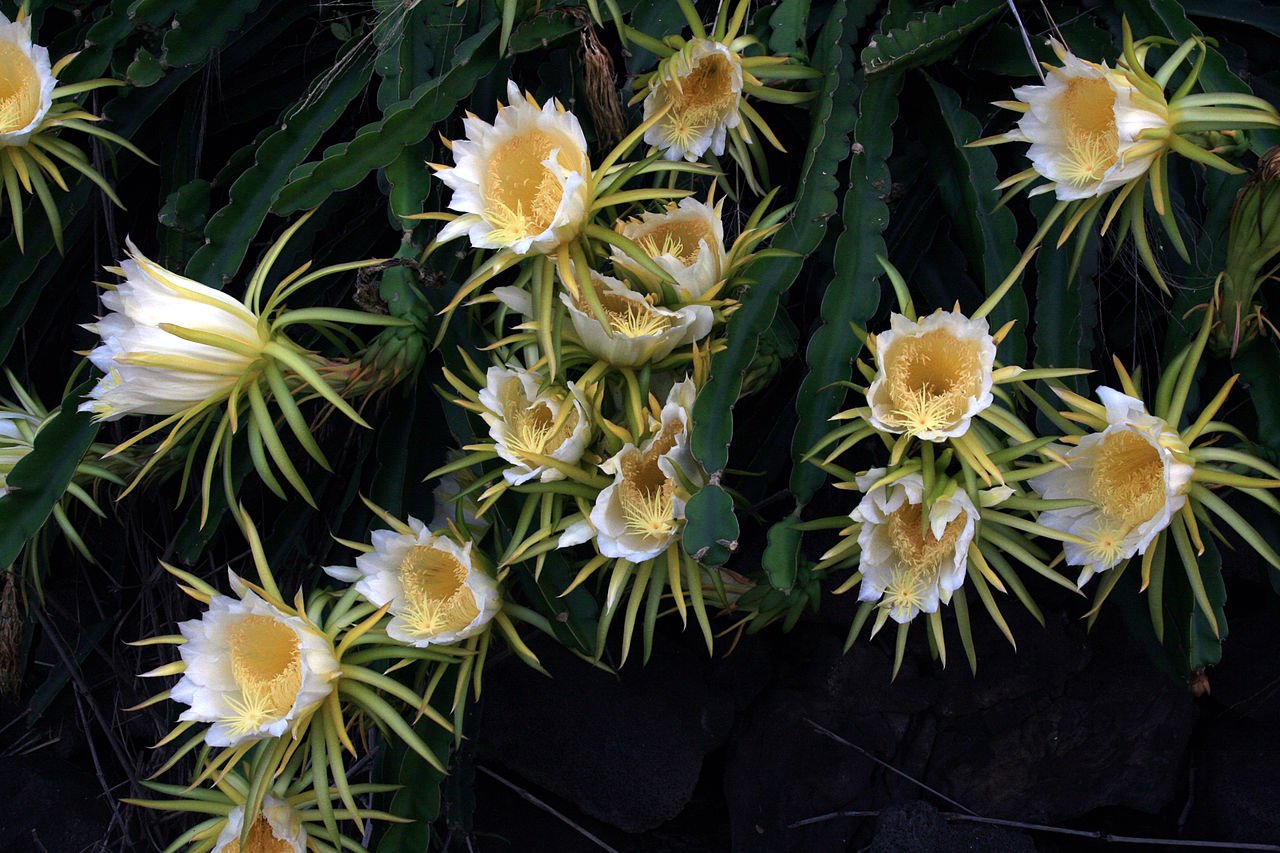
The scent’s role is to attract pollinators – mostly bats, who act as primary pollinators, and moths who fill in the blanks. Bees, hummingbirds and other typical daytime pollinators may help out as well but only during the brief time when the flowers start to open around sunset time, and again around sunrise when the flowers are already wilting away – these are not peak pollination times for Dragon Fruit. The flowers have not evolved to make use of these daytime pollinators so their efforts may not be too fruitful anyways.
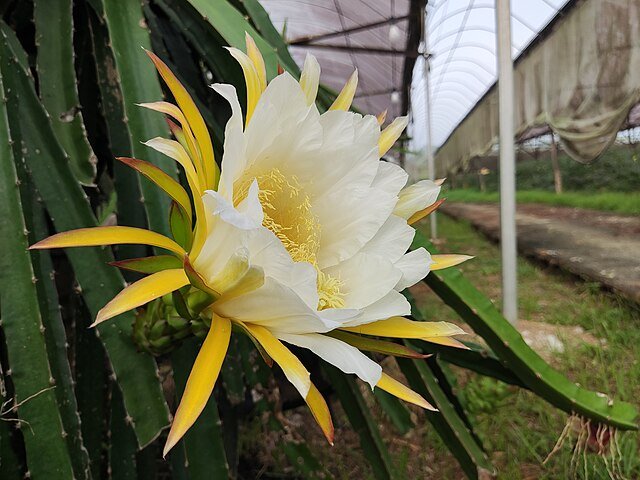
In farms, hand pollination is often used to ensure consistent yields, especially when natural pollinators are scarce.
DISHES
The fruit is delicious as a refreshing snack or mixed into a fresh fruit salad. Its crisp & refreshing taste works very well with our tropical climates.
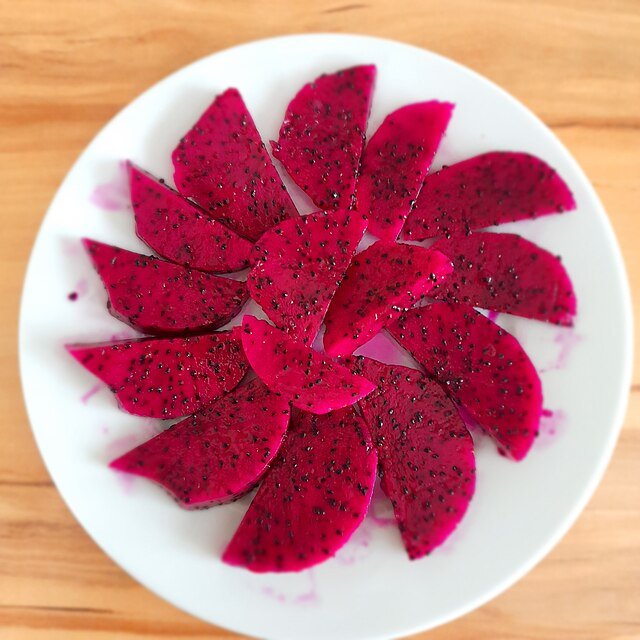
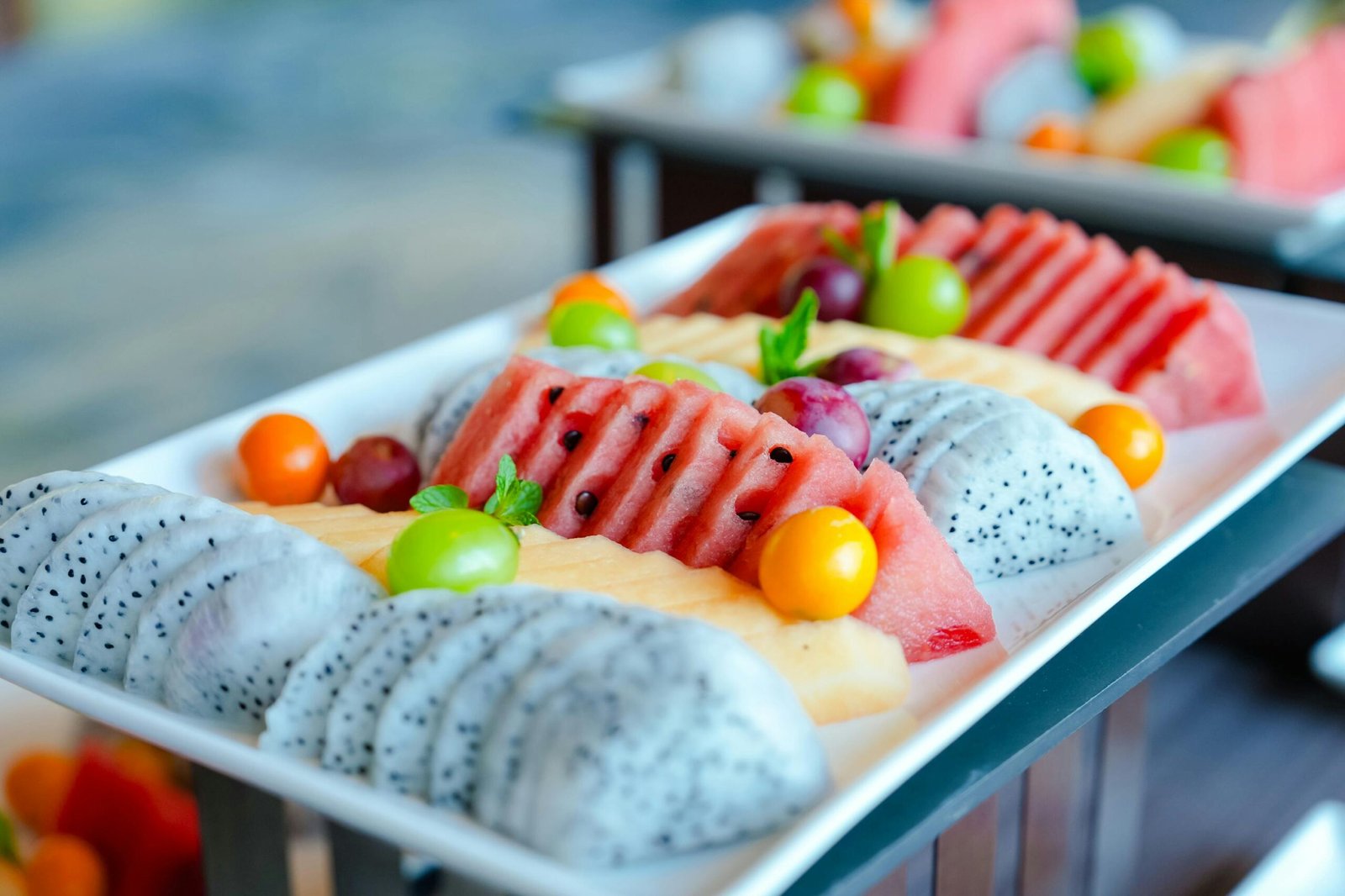
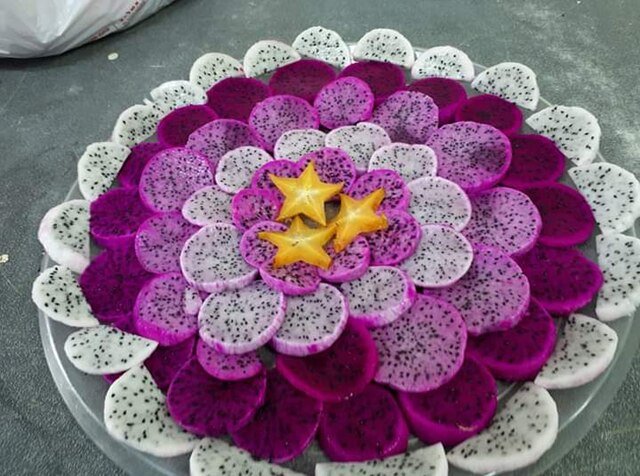
While the three types of Dragon Fruit make excellent shakes, the red-fleshed variety is the favorite due to the strong sweet flavor and the striking bright red/purple coloring.
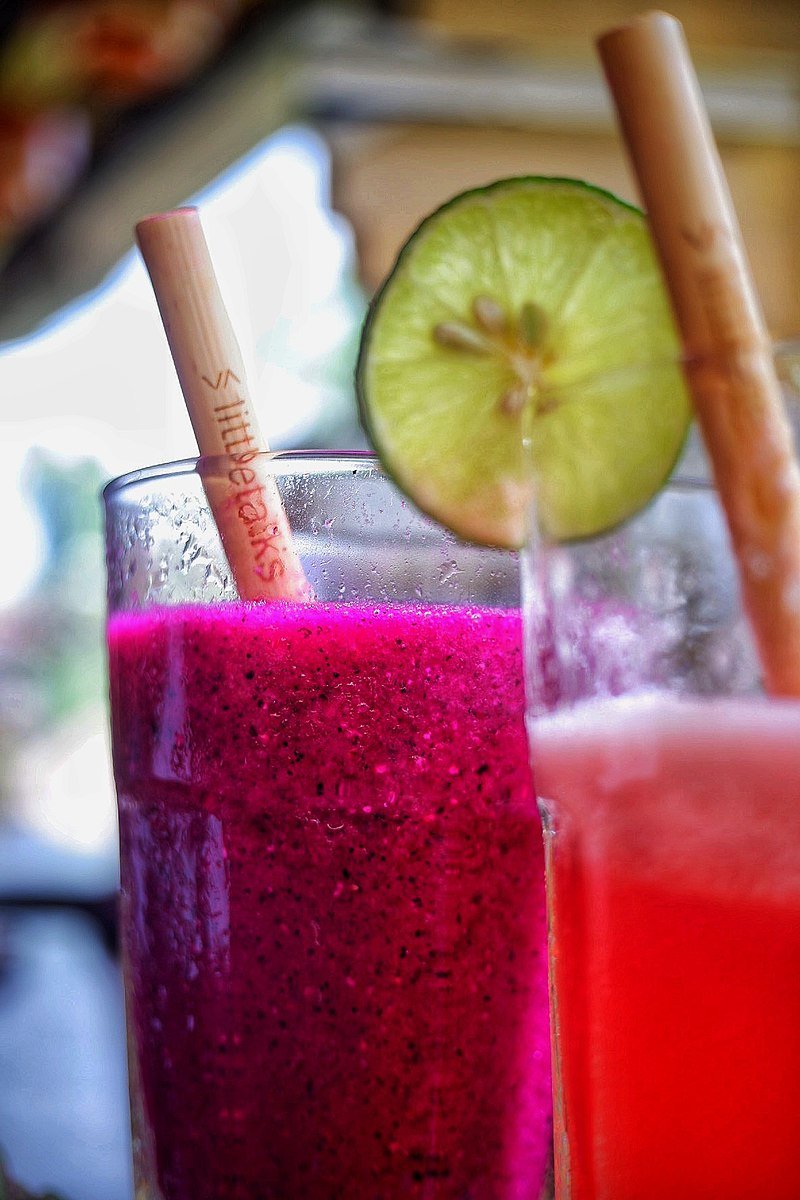
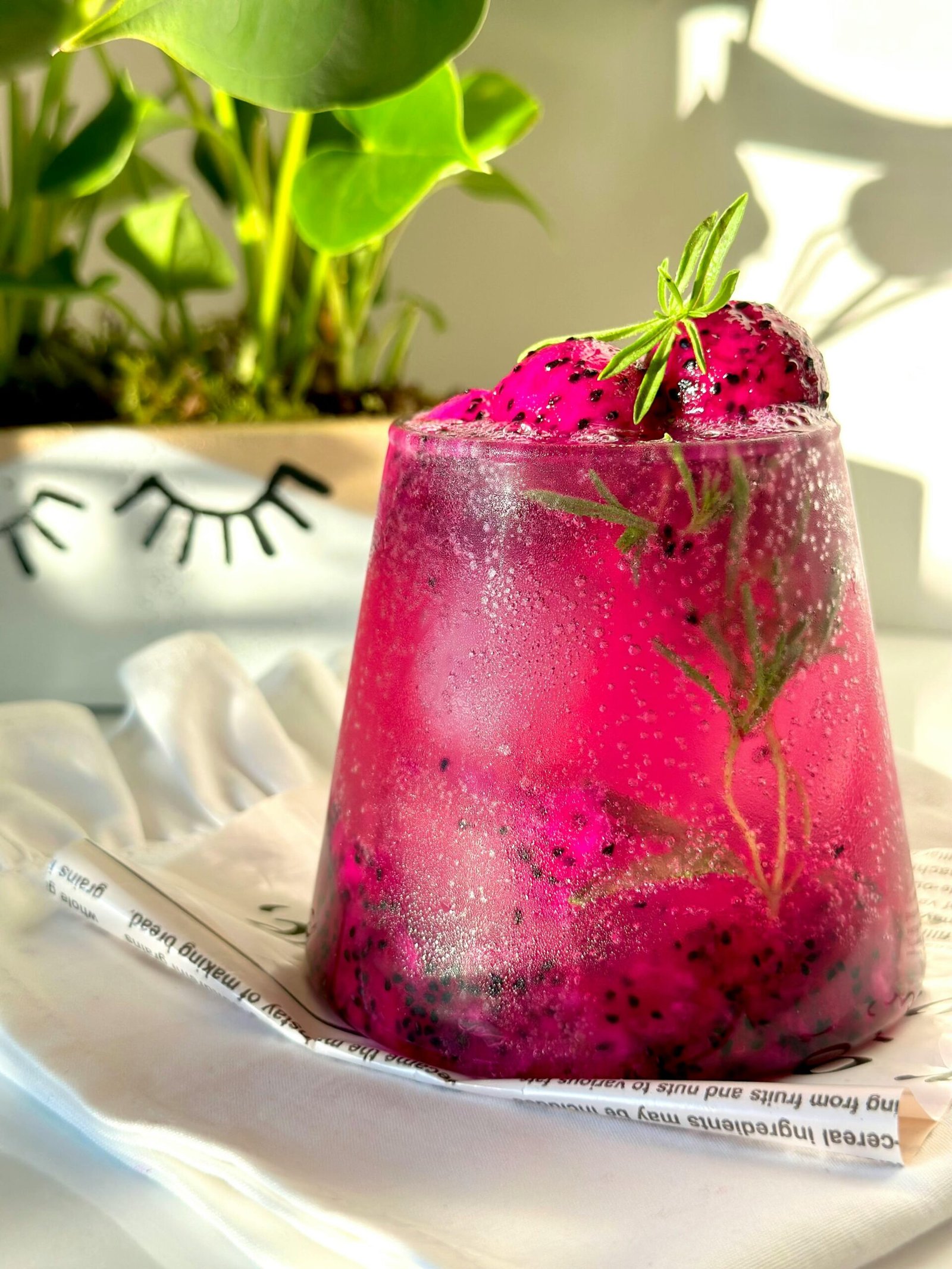
Dragon Fruit wine? It is popular in the Philippines, Thailand and Vietnam. Costa Rica is a niche maker of such beverages, serving mainly the tourist markets – but the popularity of our local Dragon Fruit wines is growing. Mild in acidity and holding a typical 10-12% alcohol content, these wines deliver an experience that is both familiar and exotic. The wines boast vibrant colorings and light fruity & tropical profiles which make them favorites for tropical cuisine or modern fusion dishes.
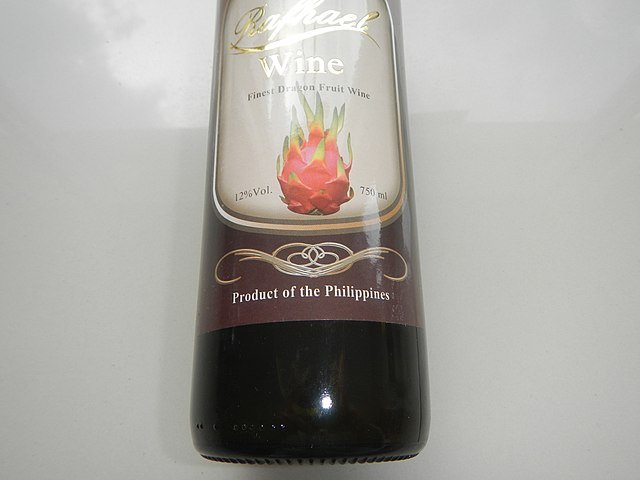
Dragon Fruit flowers can be eaten by themselves, as a salad or dish garnish, or can be steeped into a tea.
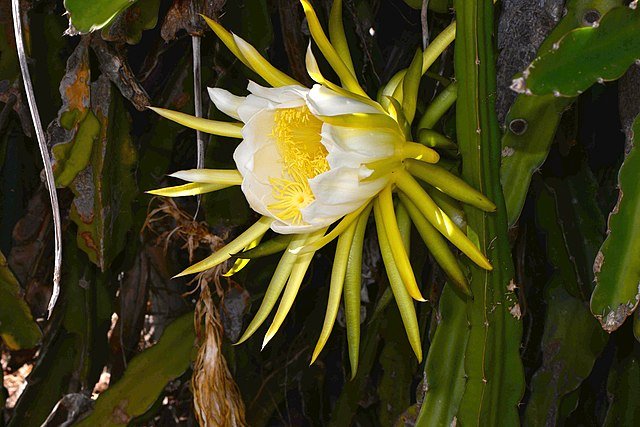
Jams & Spreads may also use Dragon Fruit – again, the sweet flavor, crunchy seeds and vivid coloring makes it an ideal candidate.
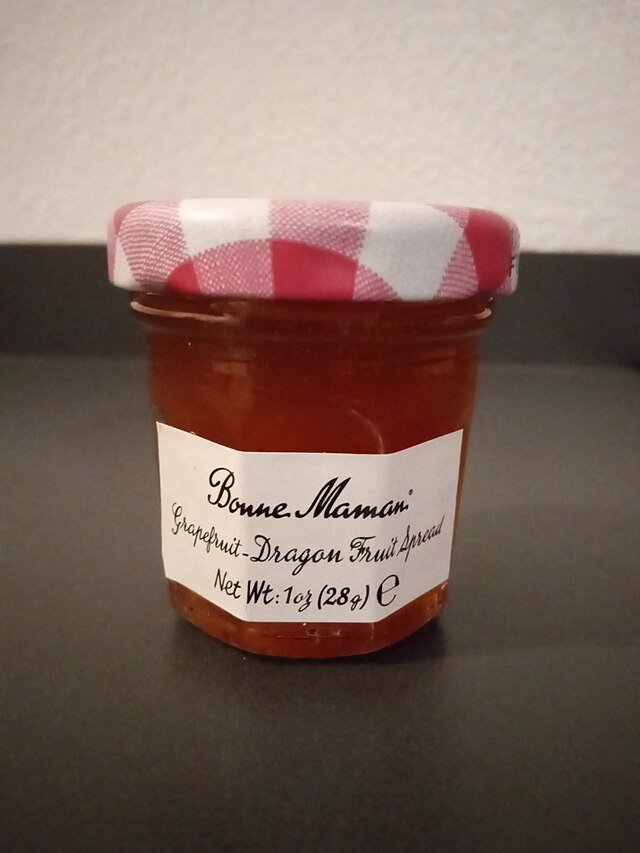
In many countries, Dragon Fruit are sold together with plastic spoons to make for a very convenient snack, especially if you wish to keep your hands clean!
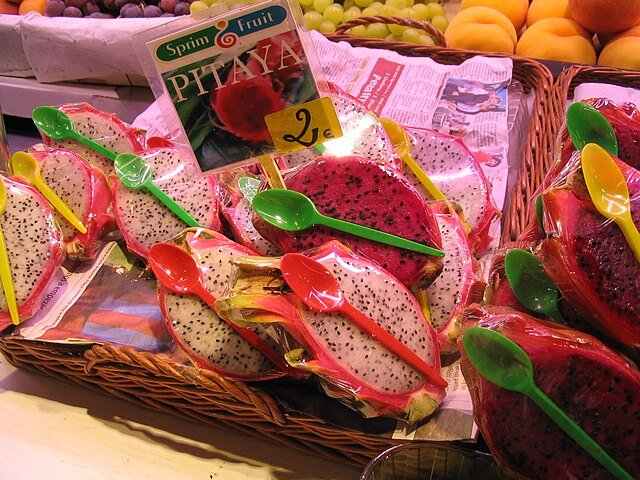
MYTHS AND SYMBOLISM
Dragon Fruit’s name evokes the scaly skin of mythical dragons – fiery, scaly, and ending in dramatic points, the name is more than appropriate in its description. In Vietnam, the fruit is called thanh long, which translates to “green dragon.” This name likely influenced the English term. The name “Dragon Fruit” was popularized in the 1960s by marketers aiming to make the exotic cactus fruit more appealing internationally. “Pitaya” or “pitahaya” was the original name used in Central and South America, derived from indigenous languages meaning “fruit of the vine” or “scaly fruit”. These days, the fruit is also known as Strawberry Pear and, less commonly, as Belle of the Night, Moonflower, and Cinderella Plant.
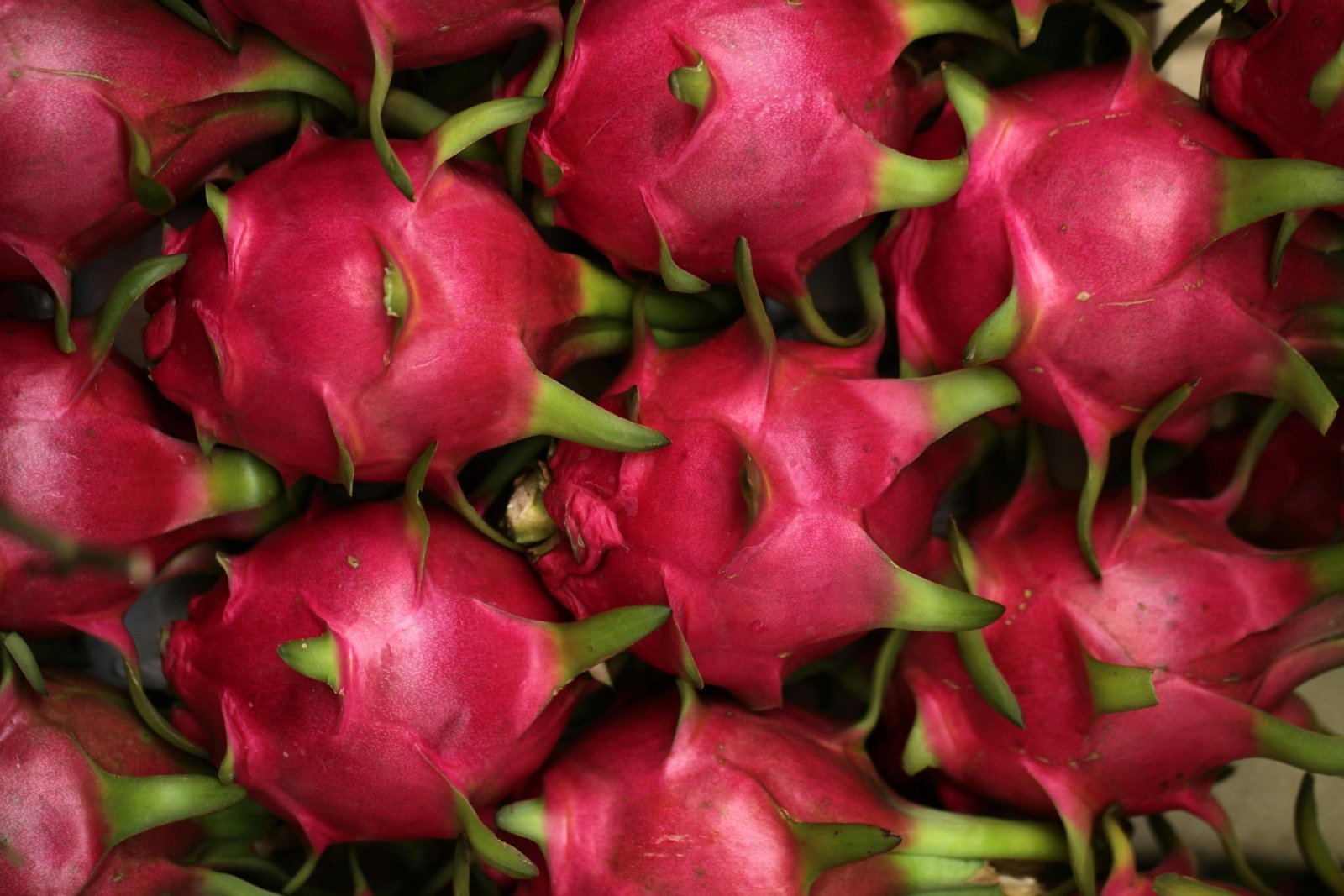
In Feng Shui, the fruit is associated with prosperity and vitality while the night-blooming flowers, which fade away after a single night, link the plant to lunar magic, dreams and hidden truths. In some traditions, the Dragon Fruit is seen as a symbol of luck, abundance, and hidden beauty.
Locally, in pre-Columbian cultures, pitaya was revered not only as food but as a symbol of vitality and resilience—its night-blooming flower seen as a messenger between worlds.
Our tropical area boasts untold variety of strange, exotic, and tasty produce – a visit to a local fruit stall will leave you speechless! Imagine living in a beautiful, tropical land where each day brings an explosion of new tastes and wonder – you can make this dream a reality much quicker than you think! Take the first step by browsing our local property listings here. RE/MAX WE SELL PARADISE is your trusted partner in this land of exotic and tropical culinary delights – we are waiting for your call!
Cover photo c/o https://www.pexels.com/@any-lane/



